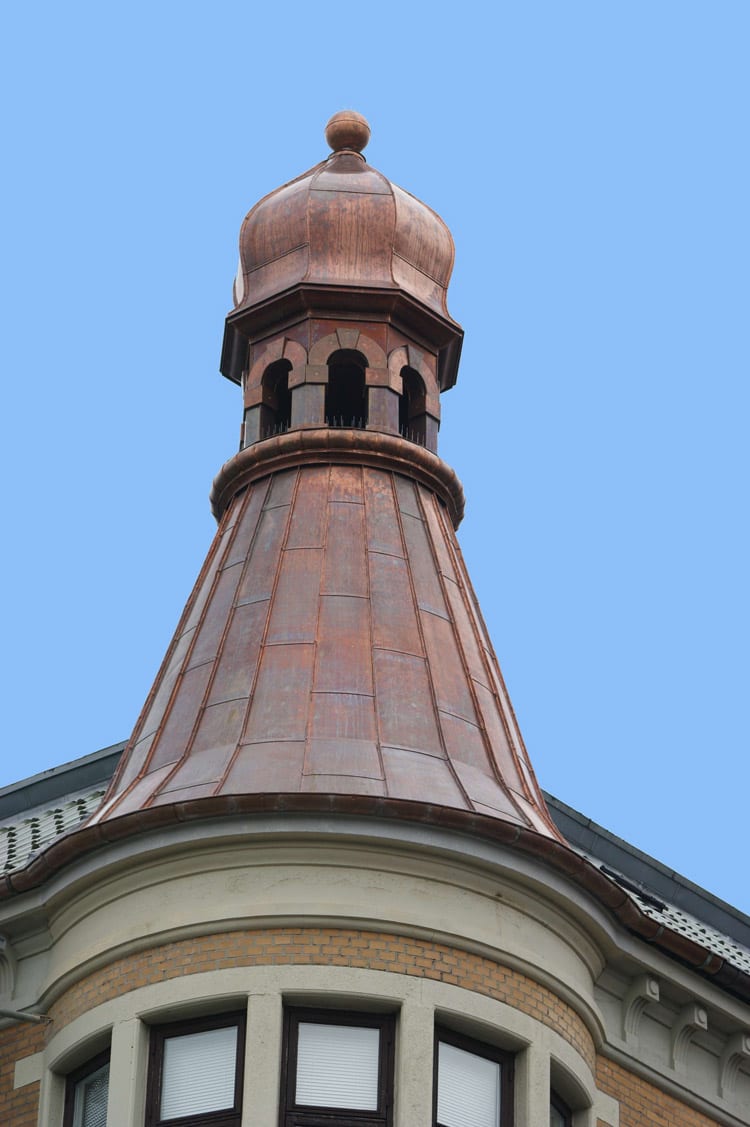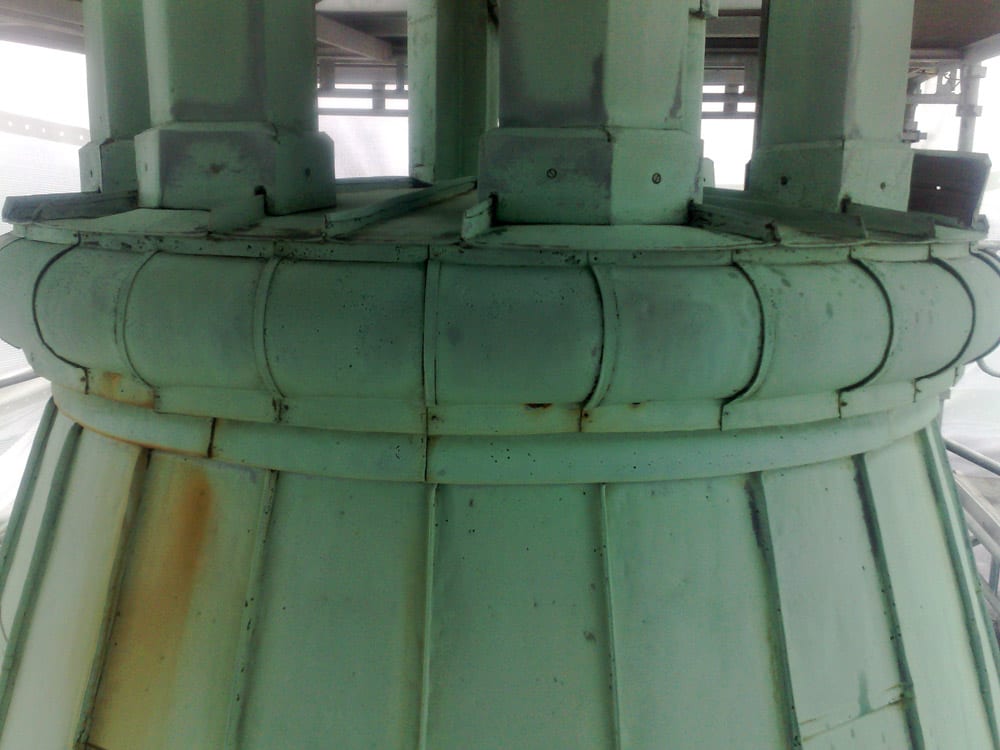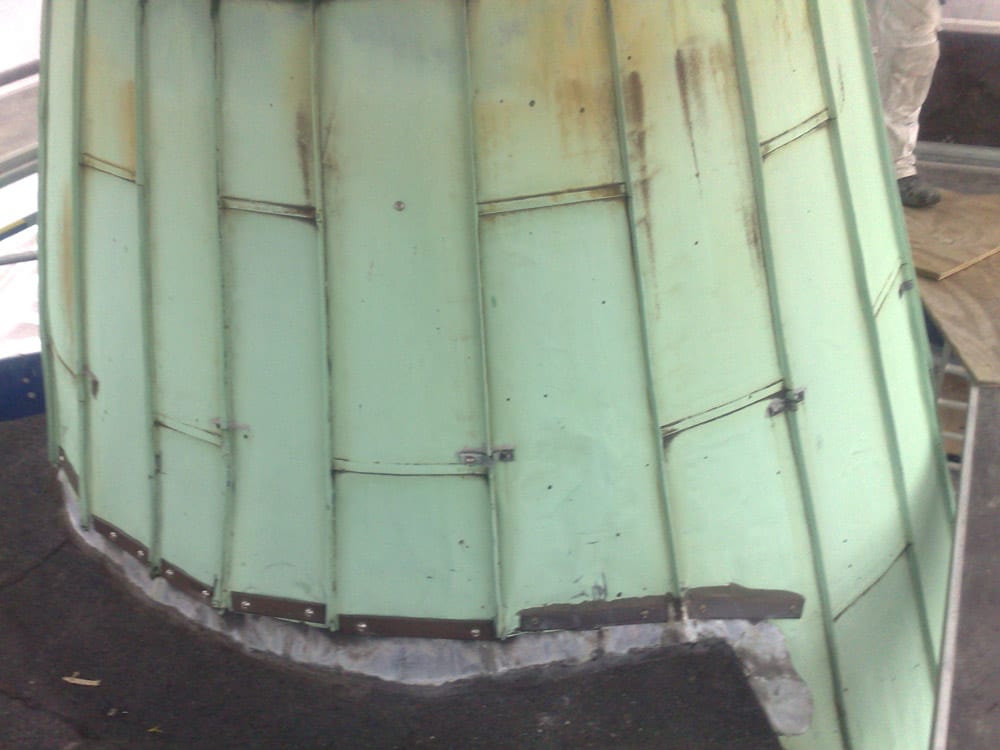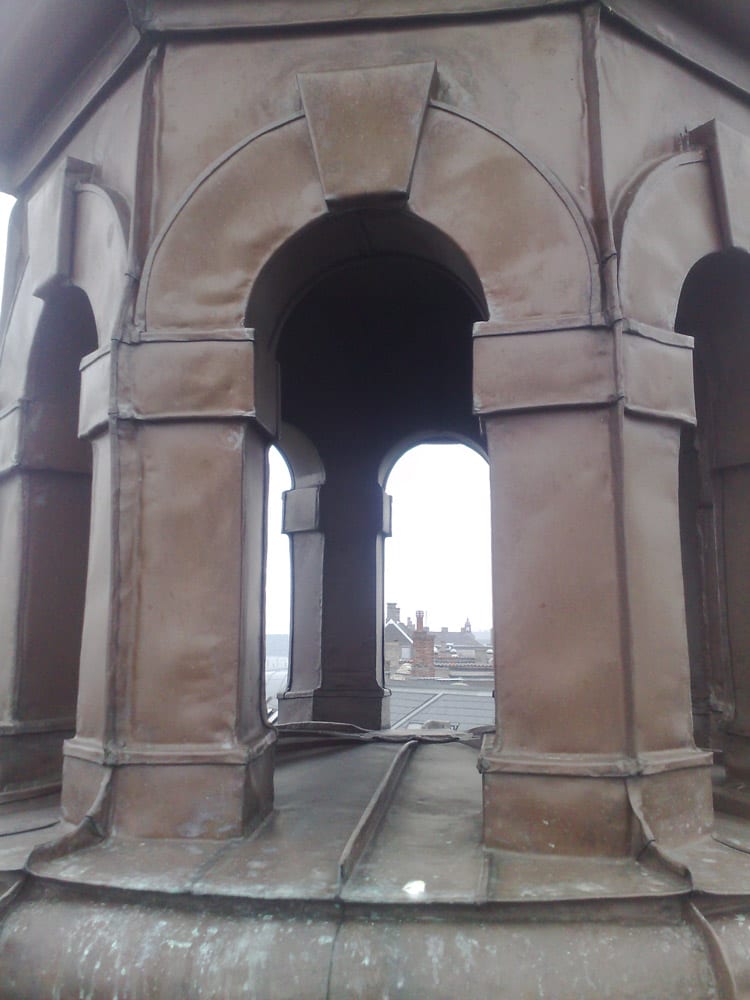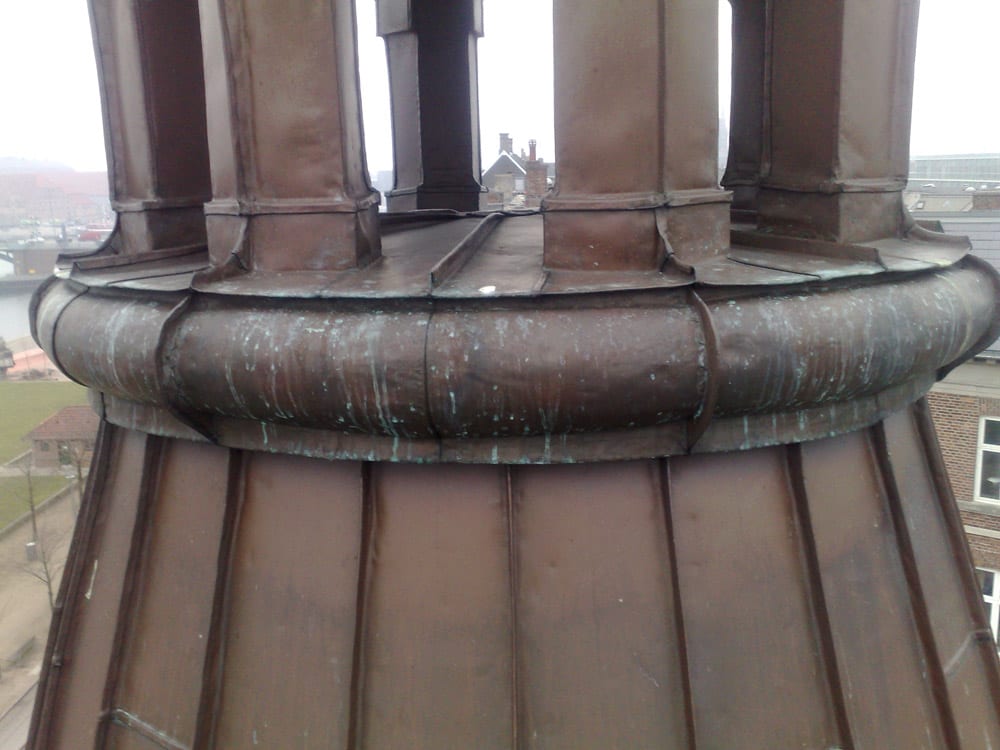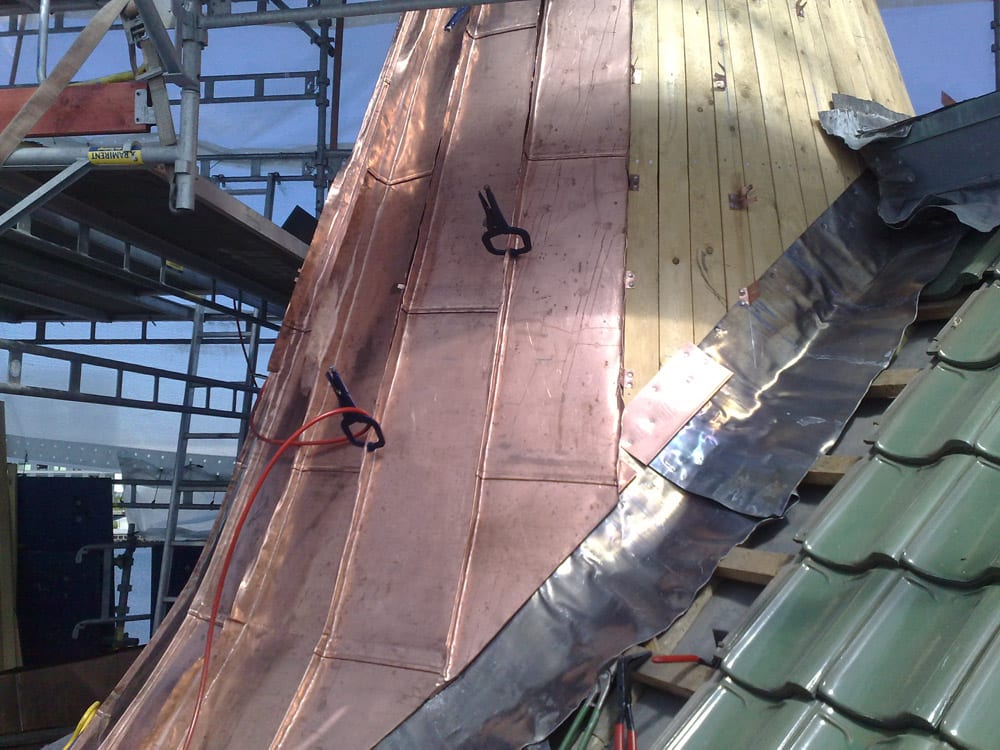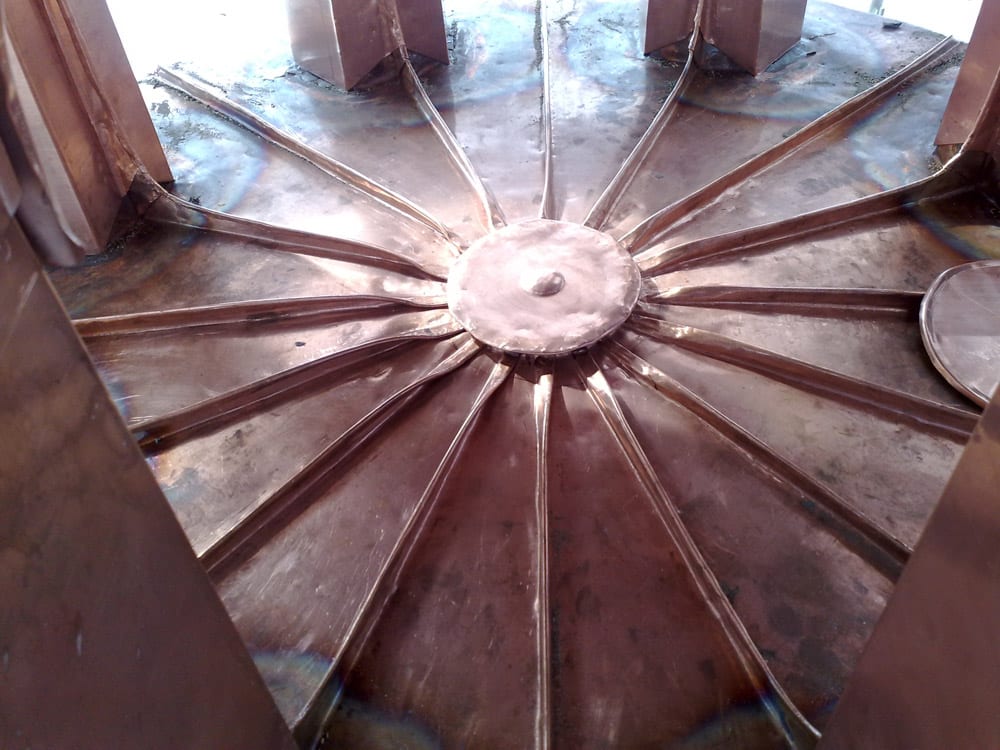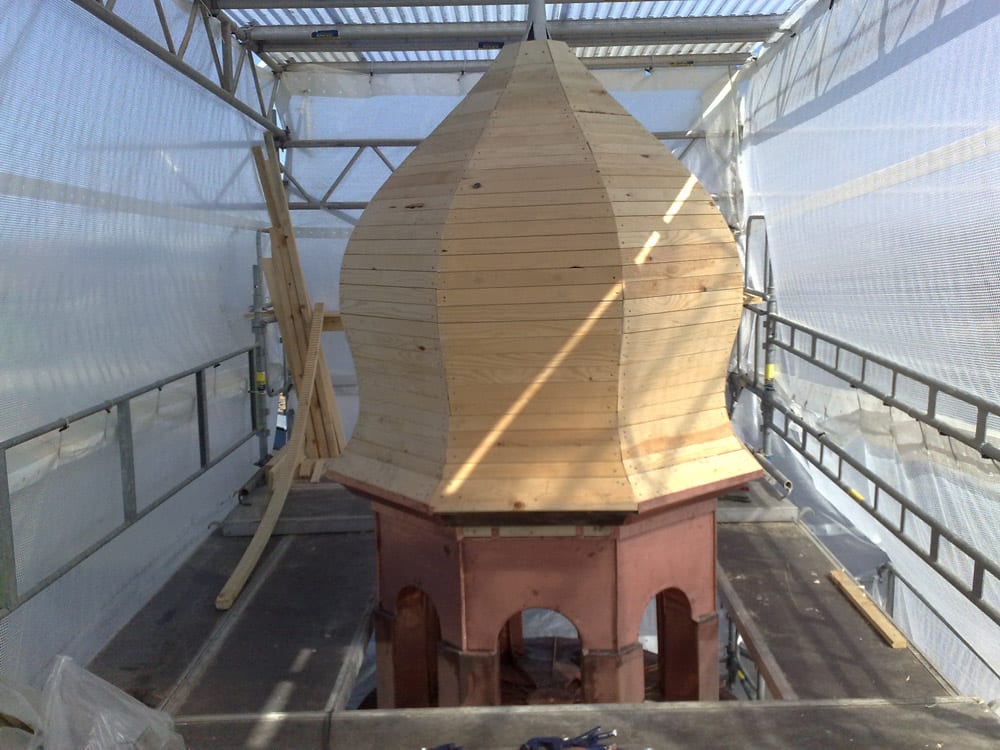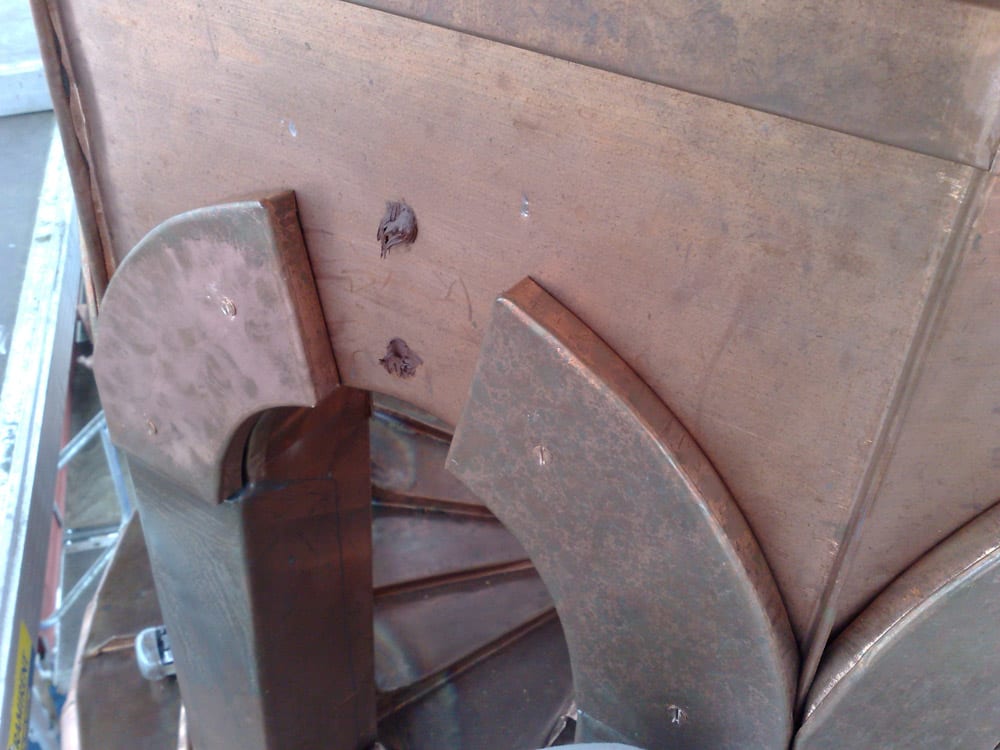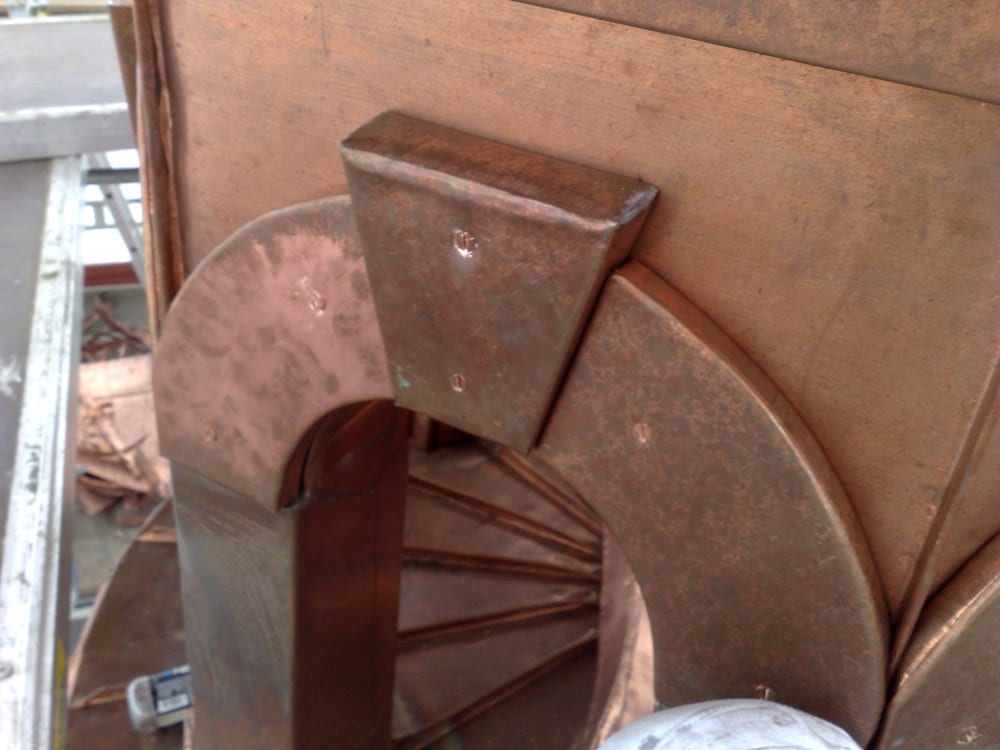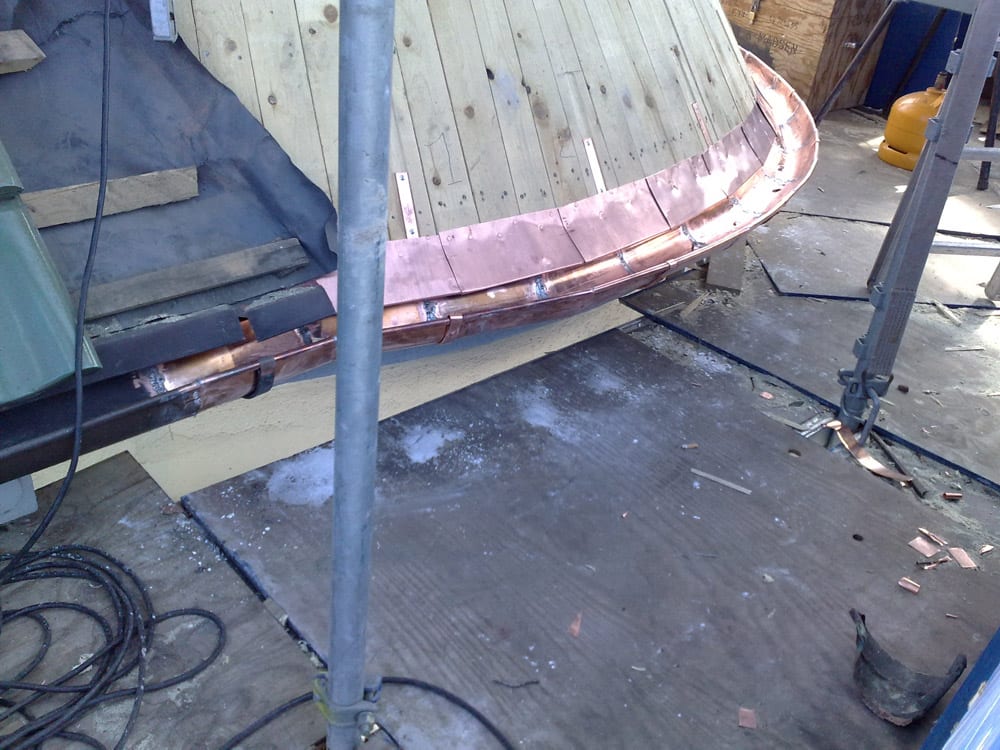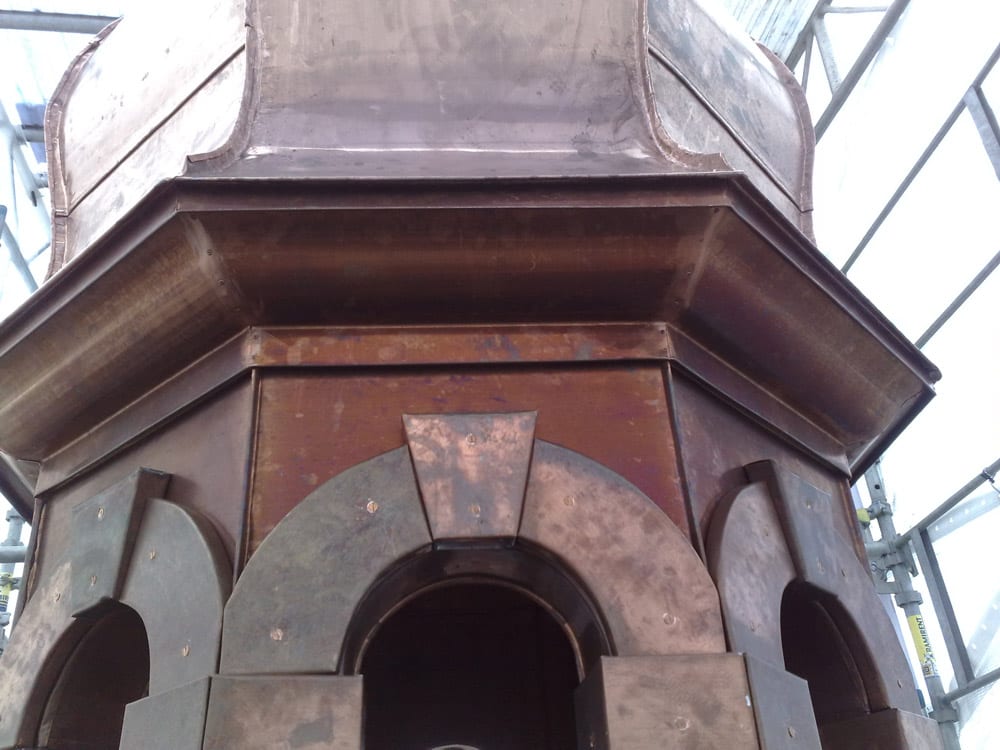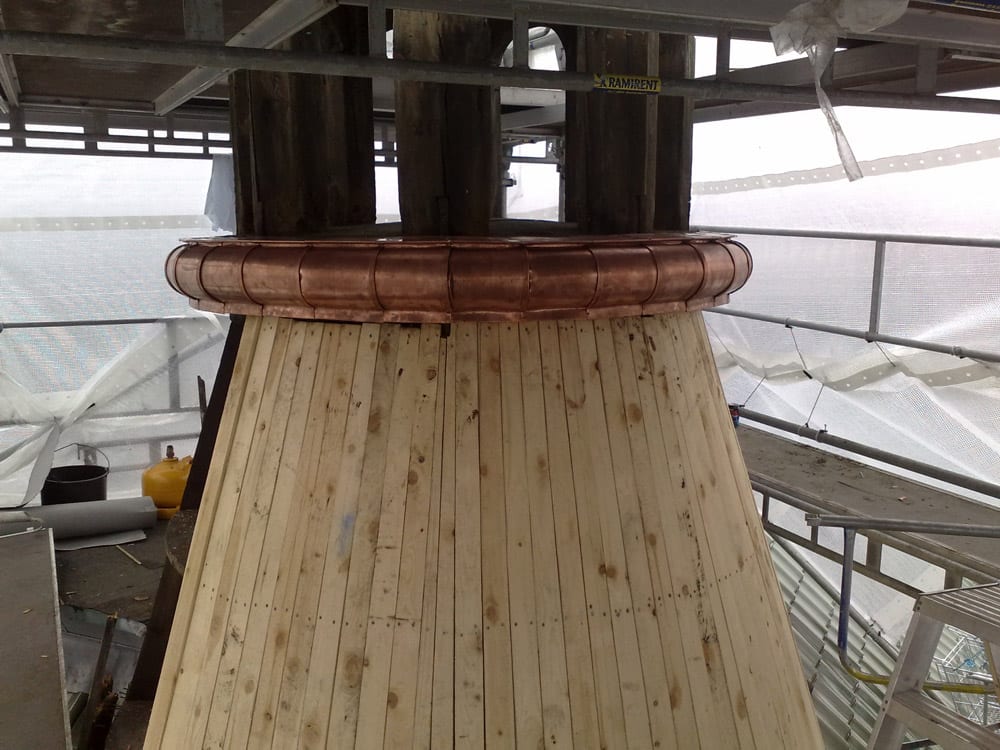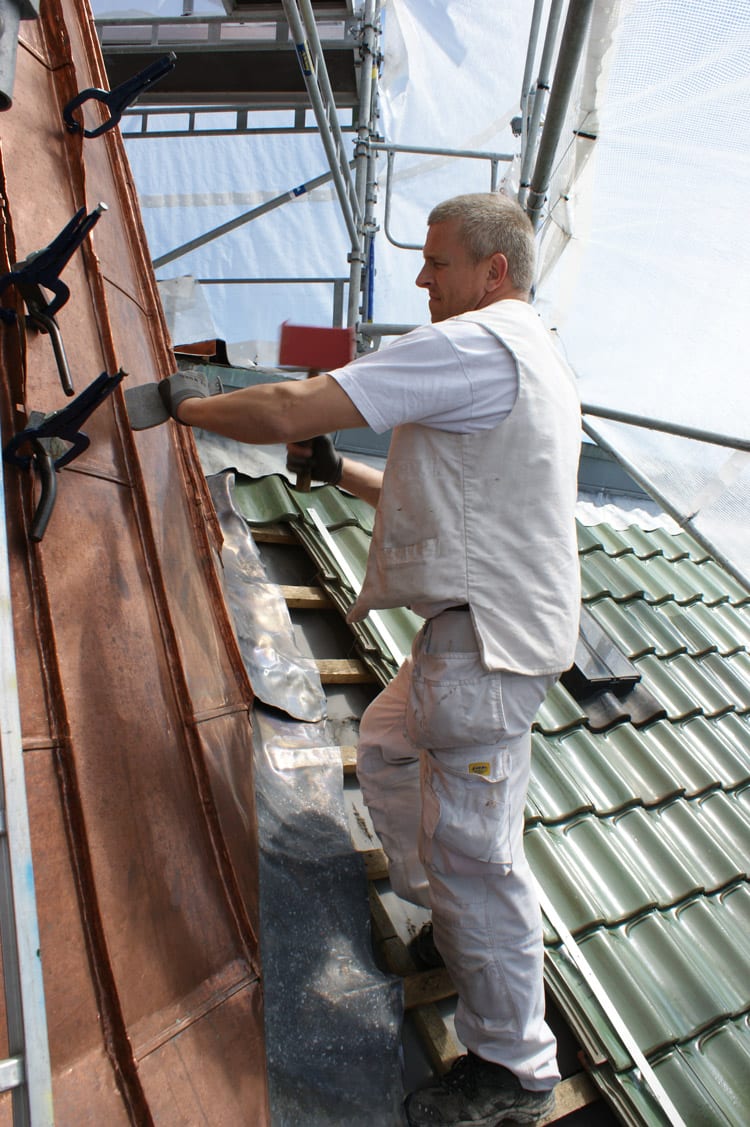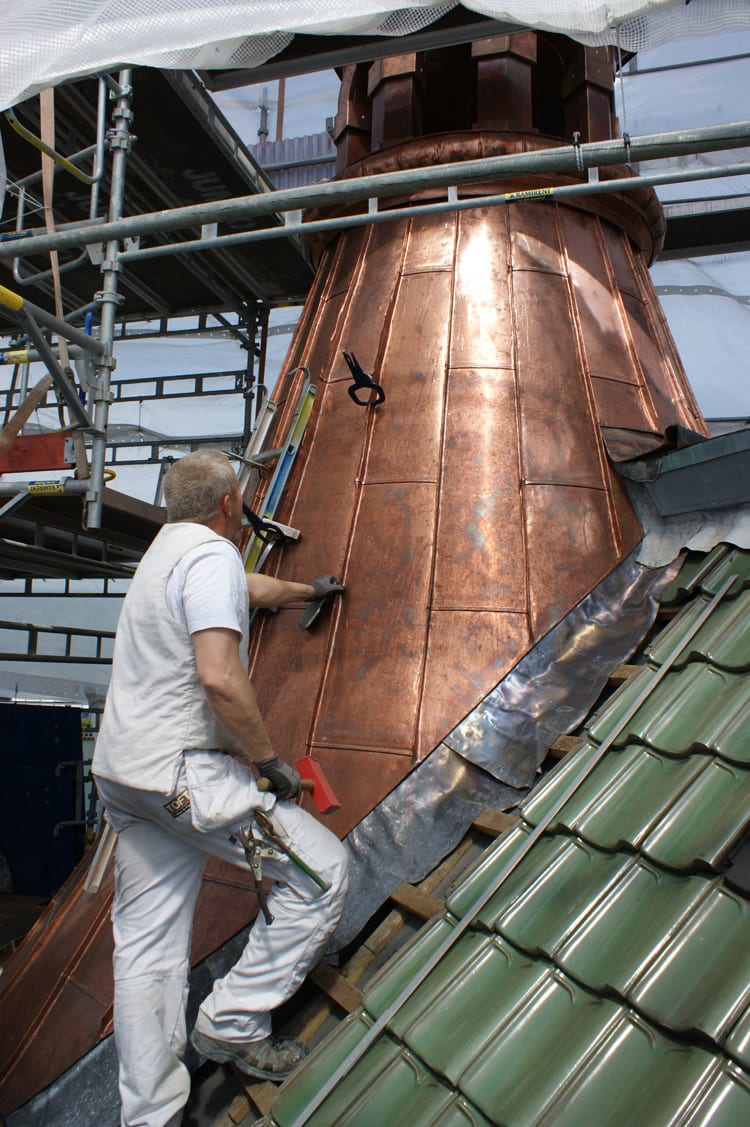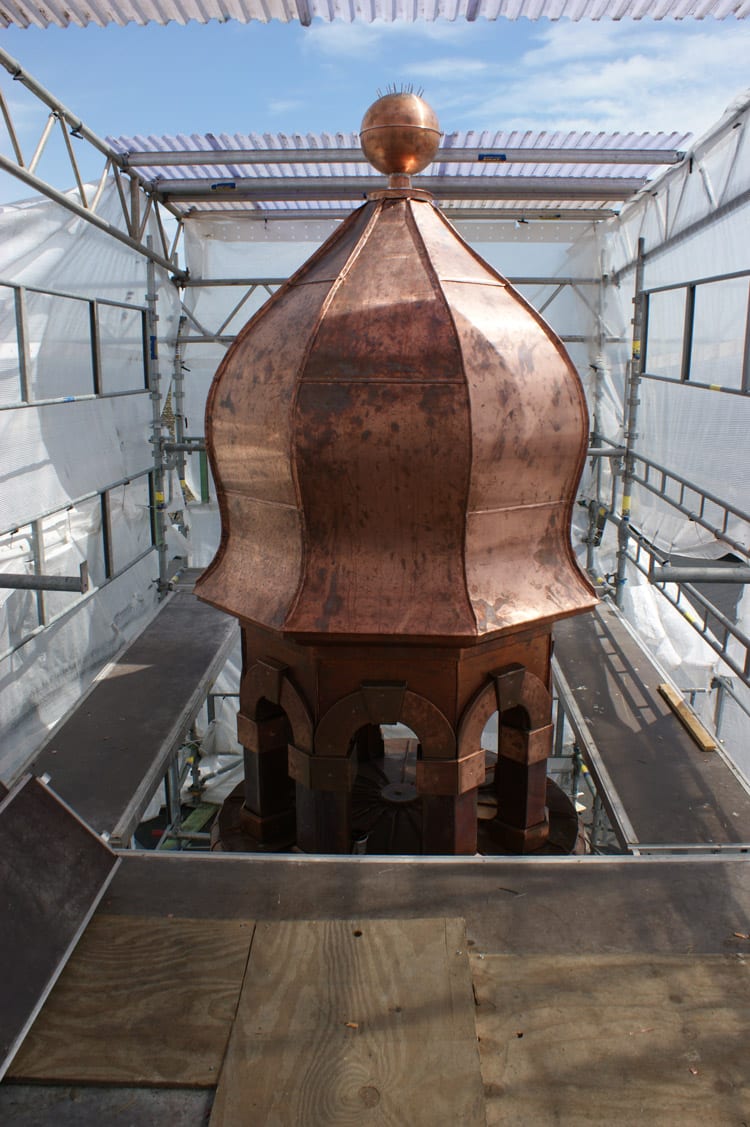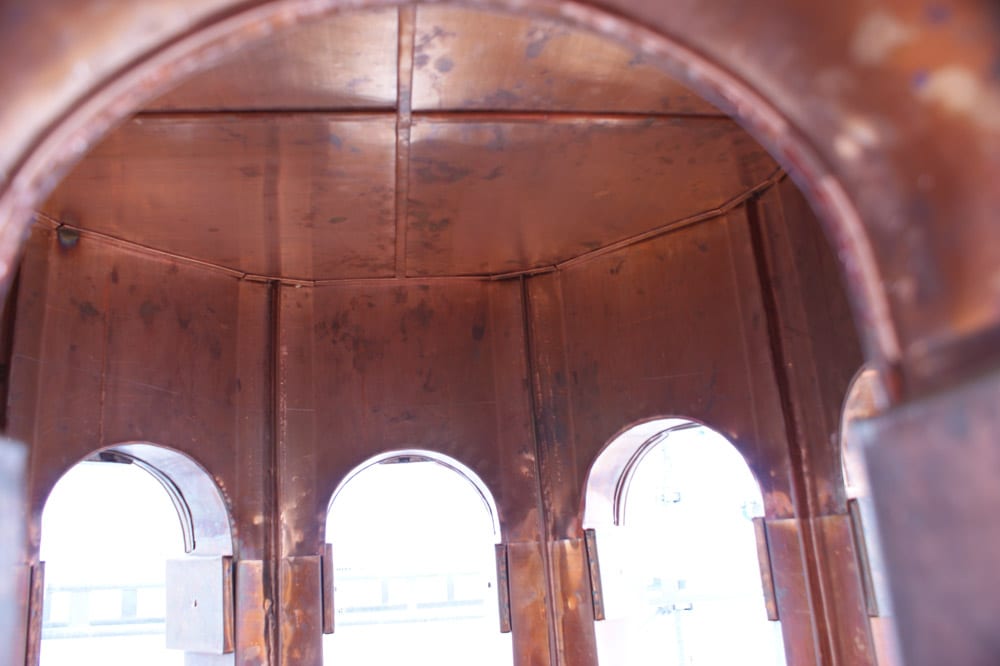Photo registration is clearly necessary. At the same time as the dismantling, of course, we also took some of the ornaments down to take a closer look at the construction. The task was underway. It had to be dismantled for the carpenter so he could change the undergarment. After all, it couldn’t last another 100 years. Each stick had to be cut into me. But for Ajourby’s 2 forwards Søren Rom and Casper Rasmussen, it was a narrow matter. At the same time, we had started the durchschictet as seen. After all, this is where most work lies. First we built the bottom up. Here we chose a solution that was very close to the existing one, but with the difference that the plate in the middle is raised about 25mm up and was not flat on the copper as before. Furthermore, we chose to make standing false behind the pills, so that we got the most waterproof solution. There are a lot of ways to solve such a task. We were starting from the premise that the solution should be dentless and watertight throughout the period. This meant that there could be nothing but standing false and that the bowl around the pills had to be beaten. Then the cladding had to be fitted. 90 % of the work on carrying out the ornamentation took place in the workshop. Here the individual parts were adapted to fit the individual arc. We again made a virtue out of the fact that there should be no dents. Dogig I tried to buy old fashioned copper screws. Apparently, they cannot be bought in Denmark. But with the help of a good friend, I managed to get hold of the right screws. Then the gutter had to be done. Small hand-rolled pieces of gutter, which were riveted with associated pull and cup insertion. Finally, the gutter was soldered. When you set up a gutter like this, it requires a lot of customization to look round. In the survey, we found that the tower was not around the downstairs, but oval. It only made additional demands on our work. When a copper-roofing is set up by us, it will always be riveted and not the popnitt. When a customer wants to pay the price for getting copper up, we think it should be completed with real rivets. These are also significantly stronger than popnites. Here we are in the process of occupying the “bell” on the tower. Since we occupy a round tower, it is important that you constantly make sure that the impression “looks straight”. Of course, we have lined up the tower, but at the same time as we put the copper lanes on, we are flush, to be absolutely certain that the lanes are straight and that they look straight ahead. The Durchsischtet is octagonal and the shipowners are divided into 3 pieces per subject. In other words, there are a total of 24 nests all around. Since 2 towers had already been carried out on the property and that lead had been used at the time for the transition between tower and roof, we were of course also bound by this. At the back of the tower, we changed the structure so that in the future you can change the roof cap itself, without any major problems. This solution meant that we achieve more and longer density than the one originally there was, where in the over-aisle lead was fitted, which, to say the least, was not comfortable when we had to replace the copper. It wasn’t the first time the lead had been changed, either. A task that isn’t really difficult, but takes time to perform when it needs to be done correctly, and adapts to give you a beautiful look. When the carpenters had finished replacing the tree on the crown we agreed that it was beautiful work. We could now start covering the crown itself. A crown is built up by a beam called “the king” in the middle. Then eight “queens” have been installed to support the king. To keep the queens in place, you mount “peasants” and it’s all built on the “land” above the durchschichtet. Since it is the curves of the queens you see, they should preferably look right :-), with the right curves. The ball itself is pressed up, also an old craft. We chose not to use lead in the transition under the sphere to the crown, to get a minimum of venting in the crown itself. The ball itself was mounted with pigeon fuse, seeing on the other two towers that it is a favorite hangout for pigeons and seagulls. After a few years, these towers are already green because of the birds’ exclusions. When you perform the crown like here, a lot of sticking and knocking is required to get swung and the bow right. It is important that these are located very close to the tree, so when you fold them together, there will be no dents in the copper. Here’s the tower in the finished version. All in all, it was a good task with a few challenges, which certainly made the task here incredibly good and fun to do.
Iben L. Heisler from Dan-Ejendomme contacted Brian Toft in 2007 and told him about a public tender regarding a renovation of a copper tower on Islands Brygge. Toft Copper won the tender and conducted the renovation of the tower in marts 2009, where they found that the copper roofing were approx 100 years old. It were ready to be changed.
Brian Toft; About roofers work-philosophy
A real copper roofer’s work-philosophy should be; that you’re not better than your last job. It’s a way to secure progression for yourself and your craft. At the same time it’s a necessity to study and understand the historic perspective in a craft, where traditions reaches back more than 400 years, and the job you’re performing now, can be seen for more than 100 years to come.























